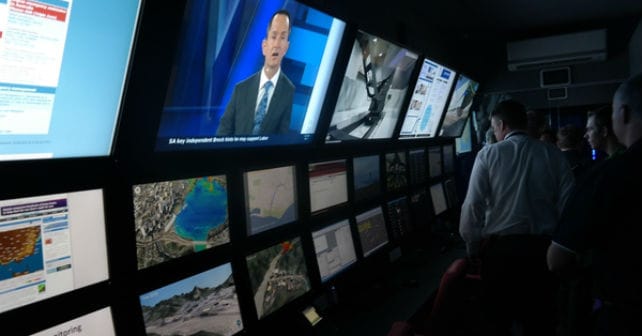Taking the grid's 'pulse' helps keep the lights on
 Successfully deploying 44 synchrophasors hardly sounds like a big deal, until you realise what those devices can mean in terms of keeping the lights on.
Successfully deploying 44 synchrophasors hardly sounds like a big deal, until you realise what those devices can mean in terms of keeping the lights on.
Integrated across a regional power transmission network, that relatively small number of devices can “bring a new level of situational awareness to grid operators,” said John R. Bear, president and CEO of the Midwest Independent Transmission System Operator, or MISO.
MISO is spending $34.5 million over three years to roll out 165 synchrophasors, or phasor measurement units (PMUs), at strategic substations on the grid. Paid for in part with federal stimulus dollars, the project is aimed at helping better manage power flow across the grid and ensure stability of electricity supplies.
The organisation recently announced it had achieved a “major milestone” in that project with the integration of 44 synchrophasors.
According to Schweitzer Engineering Laboratories, synchrophasors “put measurements from across any portion of the power system on the same, absolute time base … This gives us a tool to view the power system as a whole or to compare different points in real time.”
MISO’s new PMUs collect data 30 times each second, far faster than the previous measurements of once every four seconds. Essentially, they’ll allow the operator to take the “pulse” of the grid and watch for potential stresses or disturbances. They’ll also help MISO with “post-mortem” analyses, so it can better understand after the fact what caused problem situations.
Stresses on the electricity transmission system — such as increased power transfers, line outages and loss of generation — can cause power angles to separate, a sign of system trouble. In fact, big power angle separations have often been observed to precede large-scale blackouts.
MISO members in the smart-grid synchrophsor project include: Ameren, Duke Indiana, Great River Energy, Hoosier Energy, Indianapolis Power & Light Company, International Transmission Company, Manitoba Hydro-Electric Board, MidAmerican Energy Company, Minnesota Power, Northern Indiana Public Service Company, Otter Tail Power Company and Vectren Corporation. More MISO members might join the program soon.
“The ultimate goal of this three-year project is to enhance visibility of the network in real time so we can more quickly and accurately manage power flows within the Eastern Interconnection,” Bear said. “Collaboration with our members on this smart-grid technology has laid the foundation for using these advanced tools to enhance awareness of system stability.”
The next phase of the project consists of developing applications that will analyze the data collected so operators will have a clearer picture of stress points on the grid and can make adjustments accordingly.




